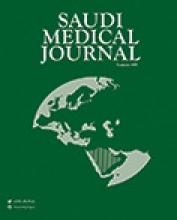Abstract
OBJECTIVE: The aim of this study is to determine the resistance patterns of bacteria causing nosocomial infections. The outcome of this resistance was followed for 3 years.
METHODS: This study was carried out during 2000 to 2002 at a university hospital in Turkey. The resistance patterns of 570 bacteria (390 Gram-negative, 180 Gram-positive) against meropenem, imipenem, ceftazidime, cefotaxime, cefepime, piperacillin/tazobactam, ciprofloxacin and tobramycin were investigated using the E-test. Extended-spectrum beta-lactamase (ESBL) production was determined using ceftazidime and ceftazidime/clavulanic acid E-test strips.
RESULTS: Meropenem was the most effective antibiotic against Gram-negative organisms (89.0%); this was followed by imipenem (87.2%) and piperacillin/tazobactam (66.4%). The most active antibiotic against Gram-positive bacteria was imipenem (87.2%) and this was followed by piperacillin/tazobactam (81.7%) and meropenem (77.8%). The rates of production of ESBL by Escherichia coli were 20.9%, Klebsiella pneumoniae 50% and Serratia marcescens were 46.7%. Extended-spectrum beta-lactamase production increased each year (21.7%, 22.1% and 45.5%). All of the ESBL producing isolates were sensitive to meropenem and 98.5% sensitive to imipenem. AmpC beta-lactamase was produced by 20.9% of the Enterobacter species spp, Citrobacter spp. and Serratia marcescens. All of these were sensitive to meropenem and 77.8% to imipenem and ciprofloxacin. Multi-drug resistance rates in Acinetobacter spp were 45.4% and 37.7% in Pseudomonas aeruginosa isolates.
CONCLUSION: As in the entire world, resistance to antibiotics is a serious problem in our country. Solving of this problem depends primarily on prevention of the development of resistance.
- Copyright: © Saudi Medical Journal
This is an open-access article distributed under the terms of the Creative Commons Attribution-Noncommercial-Share Alike 3.0 Unported, which permits unrestricted use, distribution, and reproduction in any medium, provided the original work is properly cited.






